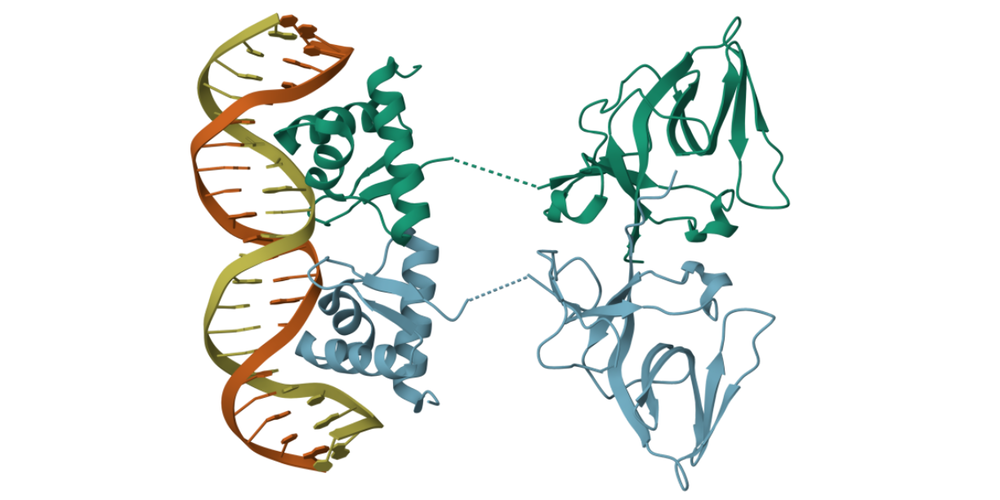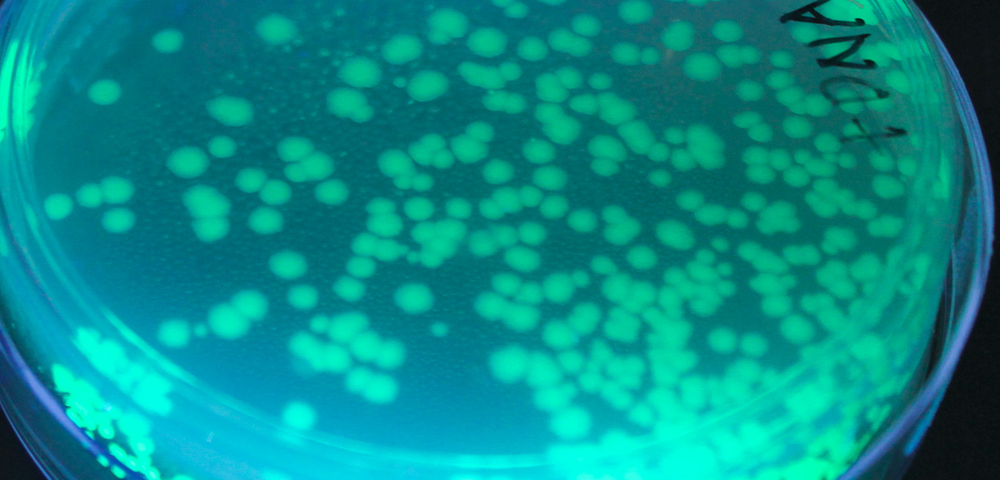Different Bacterial Genes Have Different Turn-Ons
Genes in living cells may become active or may be suppressed in response to environmental stimuli such as heat or the availability of nutrients. For bacteria, this gene regulation often appears to be a simple “on-off switch” controlled by regulatory proteins called transcription factors (TFs). But researchers have now found that different genes might respond differently to the same stimulus even if they are regulated by the same TF [1]. The team activated genes involved in DNA repair and observed gene-to-gene variations in their protein production patterns. Such differences might have been exploited by evolution to achieve complex responses with relatively few molecular components, the researchers suggest.
In the typical scenario, a TF binds to a region of a so-called promoter, a DNA sequence next to a gene. If the TF is the type that blocks gene expression, it prevents the enzyme RNA polymerase from binding and thus from beginning the process of producing the protein that the gene encodes. Because of thermal fluctuations (noise), the TF may spontaneously unbind, allowing gene expression to proceed until it rebinds. The rate of TF binding depends on its concentration, so fluctuations in concentration will cause changes in gene expression.
Exactly how such noise in TF concentration propagates to noise in gene expression hasn’t been clear, however. To explore the issue, biophysicist Erik van Nimwegen and co-workers at the University of Basel in Switzerland studied how individual cells of the bacterium Escherichia coli responded to changes in concentrations of a TF called LexA. This TF regulates several genes involved in DNA repair by suppressing their expression. If DNA damage is induced, for example, by ultraviolet radiation or chemical agents, a sequence of events causes LexA to fall apart, lowering its concentration so that the genes are expressed. When the DNA is repaired, the concentration of LexA rises again, and it rebinds to its promoters and represses the genes.
The researchers genetically engineered several of LexA’s target genes, causing the genes to produce proteins with green fluorescent protein attached. This standard trick allowed the team to monitor gene expression levels by measuring fluorescence. In the experiments, the researchers induced DNA damage using the antibiotic ciprofloxacin and then tracked the changes in fluorescence over time in individual cells.
The behavior of the cells was considerably more complex than the researchers had expected. Gene expression occurred in bursts, producing sharp peaks in fluorescence intensity. The typical durations and amplitudes of these bursts differed from cell to cell and from gene to gene within the same cell, even though each cell was treated with the same amount of antibiotic.
The results eventually led van Nimwegen and colleagues to abandon a common assumption. It has been widely assumed that TFs like LexA bind and unbind rapidly relative to the timescale of any concentration fluctuations, so that gene expression responds almost instantaneously to any TF concentration changes [2, 3].
But the researchers could only explain their results by assuming that the timescales for the two processes are comparable. Having similar timescales leads to a complex interplay between TF binding and TF concentration. In essence, van Nimwegen says, the more strongly LexA binds to a promoter, the longer a dip in LexA concentration needs to last for it to be “noticed” and reflected in a change in gene expression. The binding strengths are different for promoters of different genes, so the effects of the concentration fluctuations also differ among genes.
The findings lend support to the team’s earlier work suggesting that molecular-scale noise, instead of being a nuisance for gene regulation, might actually be exploited by bacteria [4]. “Because of the nonequilibrium nature of the regulation, TF binding sites of different strengths lead to different dynamic responses of promoters to the same signal,” van Nimwegen says. “And it is inevitable that natural selection will act on this.” For example, some of LexA’s target genes only turn on for DNA damage events that take a long time to repair. The new work shows how such different responses can arise.
Ofer Biham, a statistical physicist who studies gene networks at the Hebrew University of Jerusalem, calls the work “highly impressive, careful, and important.” He adds that the results may well apply to many other transcription factors and their targets. An exciting next step would be to explore if and how cells might exploit these consequences of noisy signals driving gene expression, he says.
–Philip Ball
Philip Ball is a freelance science writer in London. His latest book is How Life Works (Picador, 2024).
References
- L. Galbusera et al., “Rapid transcription factor fluctuations drive nonequilibrium gene regulatory dynamics in bacteria,” PRX Life 3, 033006 (2025).
- N. E. Buchler et al., “On schemes of combinatorial transcription logic,” Proc. Natl. Acad. Sci. U.S.A. 100, 5136 (2003).
- R. Phillips, “Napoleon is in equilibrium,” Annu. Rev. Condens. Matter Phys. 6, 85 (2015).
- L. Wolf et al., “Expression noise facilitates the evolution of gene regulation,” eLife 4, e05856 (2015).







